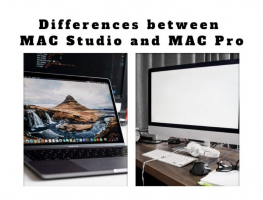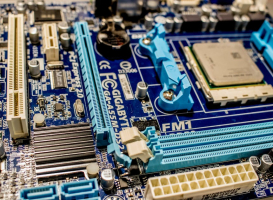Top 10 Differences between UEFI and BIOS
When it comes to booting up and initializing a computer system, two firmware interfaces, UEFI and BIOS, play a crucial role. While both serve the same ... read more...fundamental purpose, they differ significantly in terms of age, features, and capabilities. In this article, Toplist has explored the differences between UEFI and BIOS, shedding light on their key features and highlighting the advantages and disadvantages of each, that you can refer to.
-
In today's computer systems, the user interface plays a crucial role in enabling seamless interactions between the user and the system. When it comes to booting up a computer, the firmware that initializes the hardware and launches the operating system is vital. The transition from BIOS (Basic Input/Output System) to UEFI (Unified Extensible Firmware Interface) has revolutionized this process.
UEFI, also known as EFI (Extensible Firmware Interface), offers numerous advantages over traditional BIOS. It supports larger hard drives, enables faster boot times, provides a standardized way for multiple operating systems to coexist, and includes features like a secure boot for enhanced system security. Additionally, UEFI introduces the concept of the EFI System Partition, which holds important system information.
Updating BIOS firmware has become more efficient with UEFI, ensuring that the operating system and the computer system as a whole remain optimized and secure. Understanding the differences between BIOS and UEFI is essential for maximizing the potential of modern operating systems.

Image by bruce mars via unplash.com 
Image by Windows via unplash.com -
The bootloader, also known as the boot manager, is a program executed by the computer's firmware to load the operating system when the system is powered on. It is essential for managing the process of booting the computer.
UEFI (Unified Extensible Firmware Interface) and BIOS (Basic Input/Output System) are two different types of bootloaders. UEFI, a modern replacement for BIOS, provides several advantages over its predecessor. UEFI supports larger hard drives, faster boot times, and strong security features like Secure Boot. UEFI stores boot information in an EFI system partition, allowing for greater flexibility in handling multiple operating systems. In contrast, BIOS has limitations in modern operating systems and does not support Secure Boot or flexible partitioning.
When updating BIOS firmware and managing system information, understanding the differences between BIOS and UEFI is crucial for efficiently running modern computer systems. By grasping the nuances of these bootloaders, users can effectively navigate the intricacies of their computer system and optimize its performance.
In conclusion, the shift from BIOS to UEFI represents an important upgrade in computer technology. With UEFI paving the way for modern operating systems, it is clear that a comprehensive understanding of the differences between BIOS and UEFI is essential for optimizing the functionality and security of computer systems.
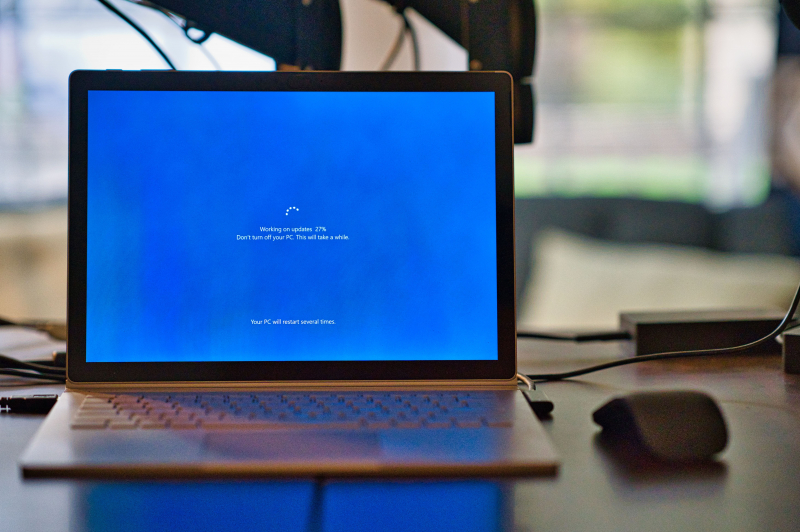
Image by Clint Patterson via unplash.com 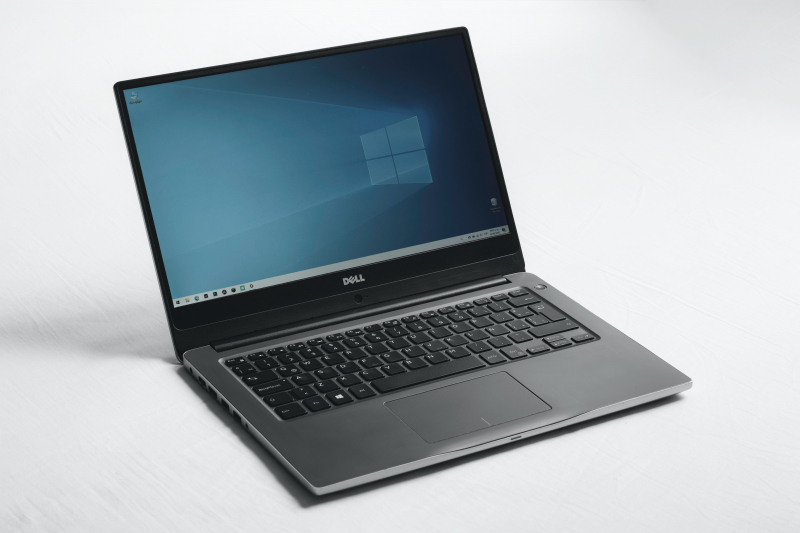
Image by Erick Cerritos via unplash.com -
As technology has evolved, modern computer systems now primarily utilize the Unified Extensible Firmware Interface (UEFI) and Basic Input/Output System (BIOS) for booting up and managing the hardware.
UEFI introduces the concept of the UEFI System Partition (ESP), a small dedicated partition that stores critical boot-related files, such as bootloaders and drivers. The ESP enables efficient organization and separation of operating systems on a single storage device, allowing users to install multiple operating systems without interference.
Both BIOS and UEFI can coexist in modern systems, but UEFI offers more advanced features. UEFI's Secure Boot feature verifies the integrity of the system boot process, ensuring that only trusted software is loaded during startup, thereby enhancing system security.
BIOS firmware can be updated to improve performance, add new features, or address security vulnerabilities. Manufacturers often provide firmware updates, and the process typically involves downloading the latest BIOS version and applying the update through a dedicated utility.
Understanding the partitioning and capacity considerations of UEFI and BIOS is crucial for the smooth operation of modern operating systems. The UEFI System Partition enables the installation and management of multiple operating systems on a single storage device, while BIOS firmware updates help enhance system performance and security. By leveraging the benefits of both UEFI and BIOS, users can ensure a stable and efficient computing experience.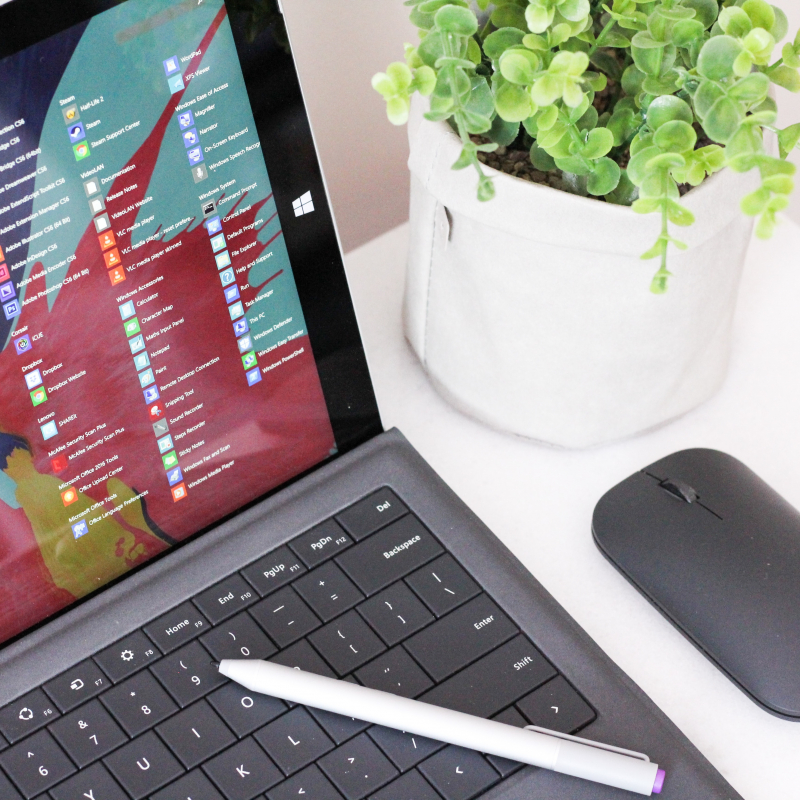
Image by Andrew M via unplash.com 
Image by Windows via unplash.com -
In the realm of computer systems, ensuring security is paramount. Two prominent firmware technologies, Unified Extensible Firmware Interface (UEFI) and Basic Input/Output System (BIOS), play a vital role in safeguarding our devices.
UEFI boasts enhanced security features over traditional BIOS. UEFI introduces the concept of Secure Boot, which ensures the system only loads trusted and digitally signed operating system software. Moreover, UEFI supports the UEFI System Partition, which contains critical system information and allows for flexibility in managing multiple operating systems on a single device.
BIOS, on the other hand, lacks the robust security measures of UEFI. It doesn't have built-in Secure Boot capabilities, potentially leaving the system vulnerable to unauthorized software execution. Additionally, updating BIOS firmware can be risky, as it requires a separate utility that might introduce security vulnerabilities if not handled properly.
In today's fast-evolving digital landscape, UEFI stands out as a more secure and reliable firmware technology compared to BIOS. Its integration of Secure Boot and support for multiple operating systems provides a solid foundation for smooth and secure modern operating systems. Regularly updating firmware, whether UEFI or BIOS, remains crucial to address any identified security vulnerabilities and ensure a safe computing environment.
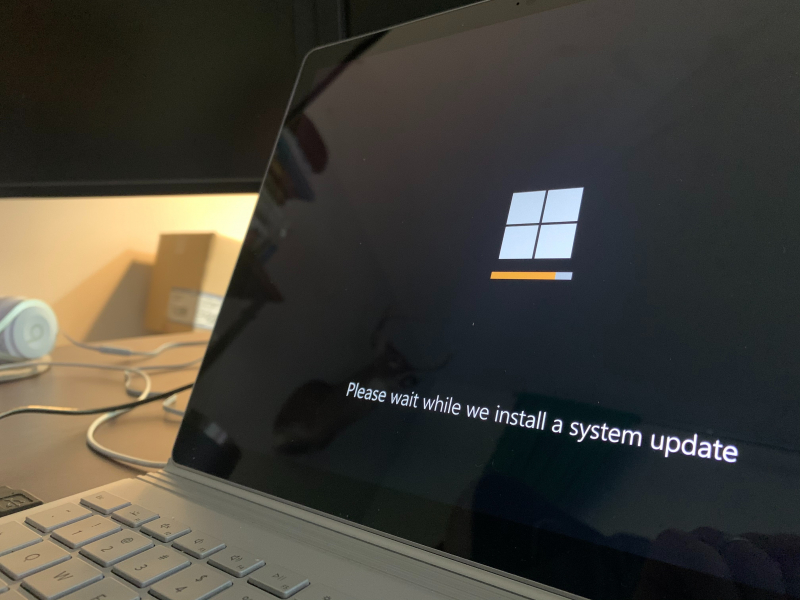
Image by Clint Patterson via unplash.com 
Image by Surface via unplash.com -
Unified Extensible Firmware Interface (UEFI) and Basic Input/Output System (BIOS) play crucial roles in facilitating the smooth operation of modern operating systems. The key difference lies in how these interfaces handle driver support for optimal system performance.
UEFI, unlike BIOS, incorporates a Unified Extensible Firmware Interface Specification (UEFI Spec) that enables modern OSes to interact seamlessly with the firmware. This specification includes a UEFI System Partition (ESP), which stores boot loaders, drivers, and system information. The ESP ensures efficient communication between the firmware and the operating system, supporting multiple OS installations on the same system through standardized driver handling.
BIOS, on the other hand, relies on the operating system to manage drivers. This can lead to compatibility issues and decreased efficiency, as the OS needs to load drivers during startup. Furthermore, BIOS firmware updates often require manual flashing, which can be complex and risky. Secure Boot is another feature exclusive to UEFI that enhances system security. It verifies the authenticity of firmware and drivers before loading them, protecting against malicious software and firmware tampering.
In conclusion, UEFI's advanced driver support, ESP functionality, and secure boot feature provide a significant advantage over BIOS. Its standardized approach ensures smoother interaction with modern operating systems, resulting in enhanced system performance and security.

Image by Tirza van Dijk via unplash.com 
Image by Baltasar Henderson via unplash.com -
Network booting is a process that allows a computer to boot from an operating system installed on a network server instead of using a local storage device. It offers flexibility in deploying and managing multiple operating systems across a networked environment.
With UEFI, network booting is supported through the use of a network stack, which is a part of the UEFI system partition. This enables modern operating systems to smoothly connect to network resources during the boot process. Additionally, UEFI offers features such as secure boot, which helps protect the computer system against unauthorized firmware and operating system loading.
In contrast, BIOS relies on the Preboot Execution Environment (PXE) standard for network booting. This allows the BIOS to communicate with the network card and obtain an IP address from a DHCP server. However, BIOS lacks the advanced features and security enhancements offered by UEFI.
When updating the computer system's firmware, UEFI provides a simplified and standardized process. It usually involves downloading the firmware update file from the manufacturer's website and using a built-in utility to install it. On the other hand, updating BIOS firmware often requires manually downloading the correct firmware version and creating a bootable USB or CD to perform the update.
Network booting is a valuable tool for organizations that need to centrally manage and deploy multiple operating systems on their network. Whether using UEFI or BIOS, it is essential to understand the differences and features associated with each. While BIOS provides basic network booting capabilities, UEFI offers a more robust and secure booting experience for modern computer systems. Keeping the firmware up-to-date is important for both UEFI and BIOS systems to ensure optimal performance and compatibility with the operating system.
Image by Dell via unplash.com 
Image by SCREEN POST via unplash.com -
In the ever-evolving world of computer systems, the Compatibility between the Unified Extensible Firmware Interface (UEFI) and Basic Input/Output System (BIOS) is crucial. UEFI is a newer firmware interface that has replaced the traditional BIOS in modern computers. It offers various advantages such as improved security, faster startup times, and support for larger disk drives. It establishes a standardized approach to booting and initializing hardware, facilitating seamless compatibility with modern operating systems.
While UEFI is the preferred choice for modern systems, BIOS compatibility is still necessary in certain scenarios. Computers with UEFI firmware have backward compatibility to support devices or operating systems that rely on BIOS. This feature enables users to install multiple operating systems, regardless of their firmware requirements.
UEFI introduces features like Secure Boot, which ensures that only trusted and verified components are loaded during the system startup. Additionally, UEFI provides enhanced system information and diagnostic tools that can aid in efficiently troubleshooting any compatibility issues.
Updating the BIOS firmware is an essential process to maintain compatibility and ensure optimal system performance. Manufacturers regularly release BIOS updates to fix bugs, improve compatibility, and add support for new hardware.
Understanding the compatibility aspect between UEFI and BIOS is key to effectively utilizing modern operating systems. While UEFI provides numerous benefits, BIOS compatibility is essential for a smooth experience when dealing with older devices or operating systems. Keeping firmware up to date plays a crucial role in maintaining compatibility and ensuring a stable computer system.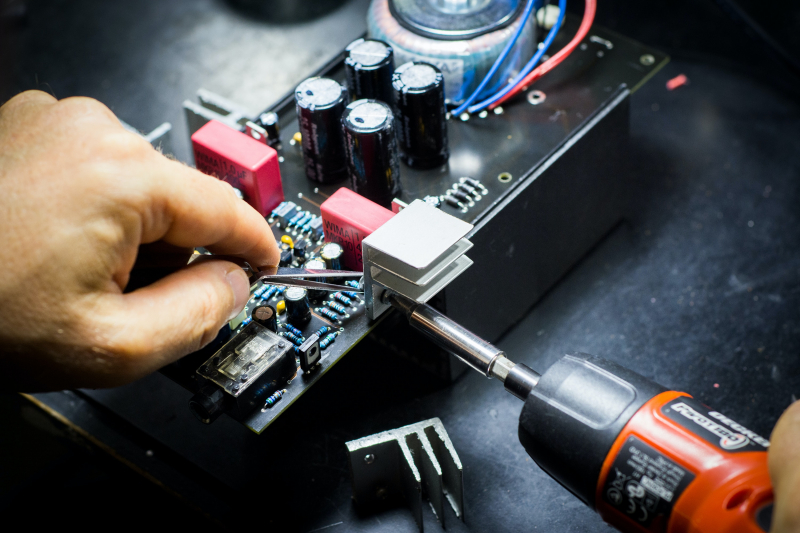
Image by Blaz Erzetic via unplash.com 
Image by Rishabh Pammi via unplash.com -
In the computer system landscape, the evolution of firmware interfaces has brought about significant changes. Unified Extensible Firmware Interface (UEFI) and Basic Input/Output System (BIOS) are two widely recognized firmware interfaces that have played essential roles in booting up and initializing computer systems.
UEFI, or Unified Extensible Firmware Interface, is a newer standard that has gradually replaced the traditional BIOS. It offers enhanced capabilities and a more graphically appealing user interface. UEFI systems employ the UEFI system partition, a separate and independent section of the storage device dedicated to booting and providing system information.
Updating the UEFI firmware involves a straightforward process, allowing users to apply the latest improvements and security patches effortlessly. Manufacturers often provide specific instructions and tools for this task. BIOS, or Basic Input/Output System, has been a reliable and widely adopted firmware interface for several decades. It operates in a text-based environment and uses the Master Boot Record (MBR) to locate the operating system.
UEFI has emerged as the modern replacement for the BIOS firmware interface. Its improved capabilities, such as support for multiple operating systems and secure boot, make it an essential component in modern computing environments. While transitioning from BIOS to UEFI requires careful consideration and planning, it brings numerous benefits and optimization opportunities for the smooth and secure operation of modern operating systems.

Image by Patrick Amoy via unplash.com 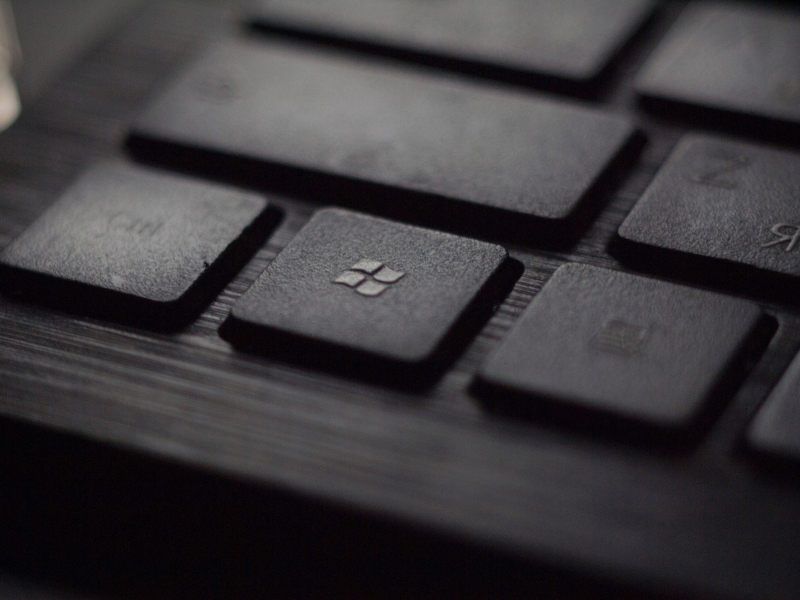
Image by Tadas Sar via unplash.com -
Hardware support is crucial for system stability, and Unified Extensible Firmware Interface (UEFI) and Basic Input/Output System (BIOS). UEFI is a firmware interface that acts as an intermediary between a computer's hardware and the operating system. It replaces the traditional BIOS, offering modern features such as a graphical user interface and mouse support. UEFI supports a larger number of storage devices, allowing for faster boot times, and providing a standardized way to access system information and settings.
BIOS is the older firmware interface that was prevalent before UEFI. It primarily handles the initialization process of hardware components during the booting phase. However, BIOS has limitations regarding storage support, graphical interfaces, and system information retrieval.
UEFI provides enhanced hardware support, enabling compatibility with newer hardware technologies and larger storage capacities. It supports features like Secure Boot, which verifies the integrity of the operating system during booting, providing additional security. UEFI also allows for a UEFI System Partition, enabling multiple operating systems to coexist on a single device.
UEFI's modern features make it easier to navigate and configure system settings, improving the user experience. Updating UEFI firmware is typically straightforward, often involving downloading the update from the manufacturer's website and using a dedicated tool to install it.
UEFI replaces the traditional BIOS, offering improved hardware support, secure booting, and easy system configuration. With its modern features, UEFI enables smooth operation with modern operating systems, enhancing stability and compatibility.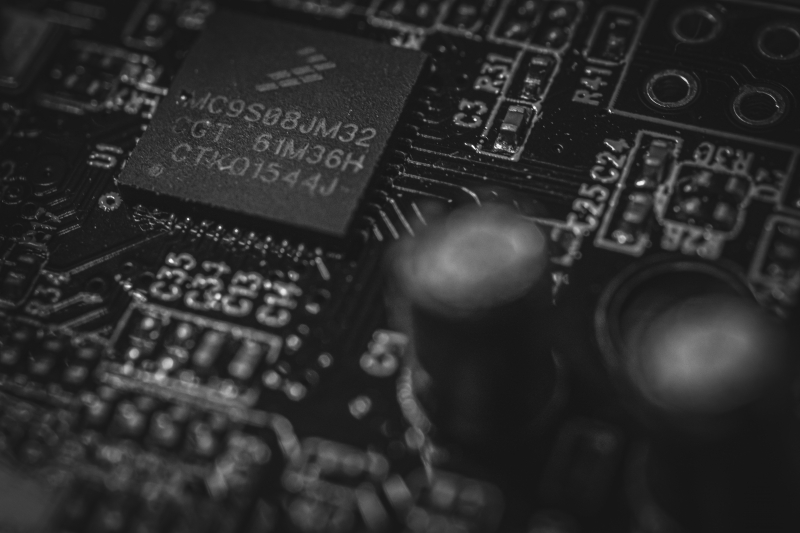
Image by Clyde He via unplash.com 
Image by Morgan Richardson via unplash.com -
UEFI and BIOS enable users to configure system settings and parameters. However, UEFI provides a more advanced and user-friendly interface compared to the text-based BIOS setup. UEFI also introduces the concept of the UEFI System Partition, where critical system information and bootloaders are stored, enabling multiple operating systems to coexist seamlessly.
In terms of extensibility, UEFI outshines BIOS with its support for more advanced features. One notable example is the Secure Boot functionality, which verifies the authenticity of firmware and operating system components, ensuring a secure computing environment. UEFI's extensibility allows for easier updating of firmware, providing better compatibility and improved system performance.
Both UEFI and BIOS are vital components of a computer system, but UEFI offers enhanced configuration options and superior extensibility compared to the traditional BIOS. With UEFI's support for modern features like Secure Boot and seamless coexistence of multiple operating systems, users can experience smoother and more secure computing environments. Keeping the firmware up to date is crucial for optimal system performance and compatibility with the latest operating systems.
Image by Windows via unplash.com 
Image by Desola Lanre-Ologun via unplash.com












